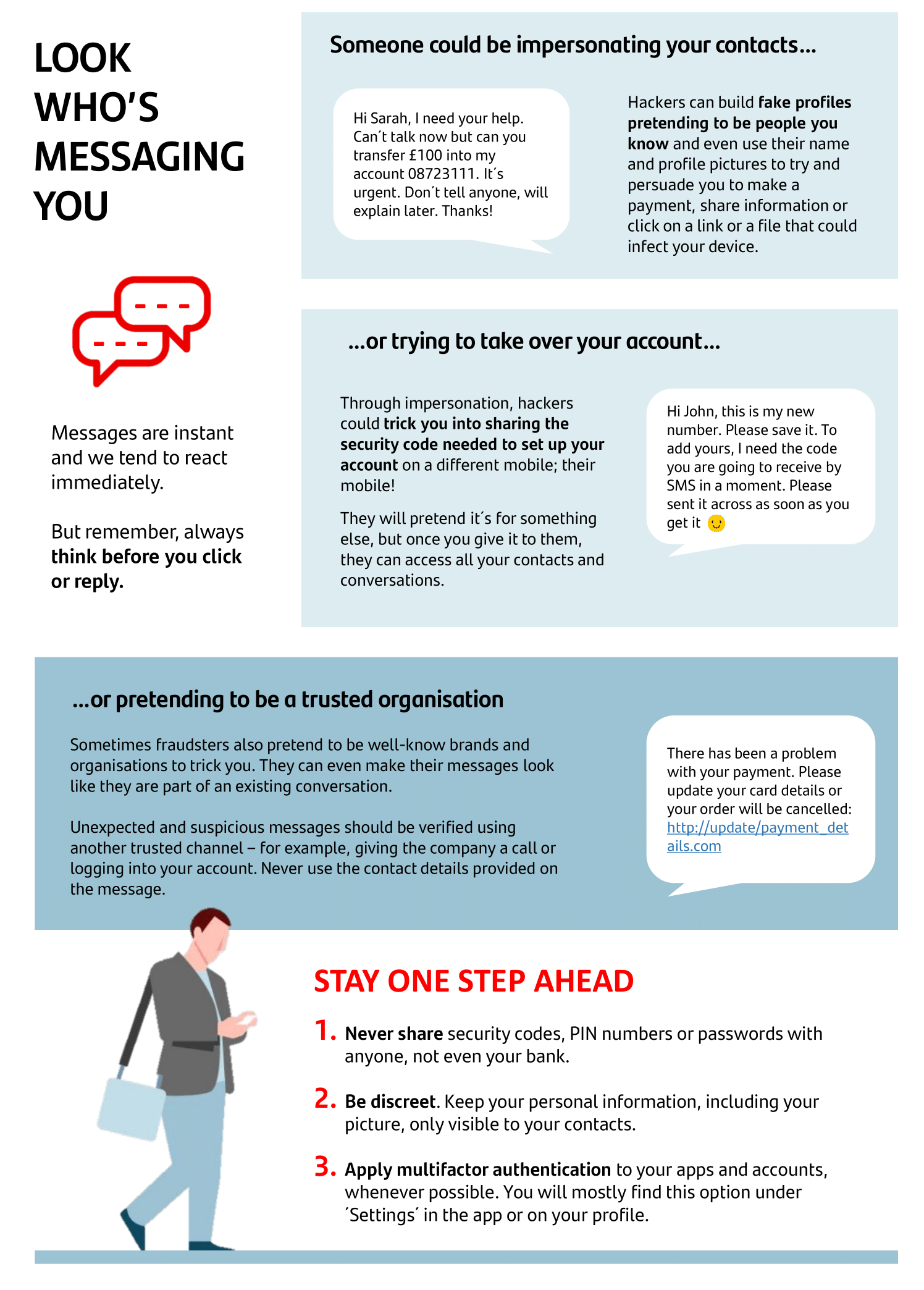How to spot and prevent scams on instant messaging apps


Scams on instant messaging services and platforms are growing in number. Victims who fall into the trap can end up losing vast sums of money. Here we tell you how to spot and prevent these types of cyber attacks.
Technology has had a profound impact on the way we interact with each other. It enables us to communicate in real time through text, chats and social media. Instant messaging services and platforms have become the most popular way for friends, relatives and work colleagues to talk to each other.
Cyber criminals use a wide range of tactics to dupe millions of users into sharing information, making payments, downloading malicious files, and other things.
They usually turn to social engineering and impersonate relatives, work colleagues, headhunters, banks, telecommunications companies and other trusted people and businesses. They use public information (for instance, addressing potential victims by name) and copy profile photos to appear more credible. They also create a sense of urgency to force victims to act quickly, with no time to think.
These are some of the most common scenarios:
- A package could not be delivered.
- A relative needs you to lend them some money.
- A bank asks you for personal information.
- A company executive asks you to make a payment.
- A job opportunity that’s too good to miss.
- Offers with attractive discount.
Think before responding and protect your data
At Santander we work hard to protect our customers online through awareness campaigns. We recommend following these tips in the event of a scam attempt:
- Whether it’s a phishing email or SMS, read it carefully and, if in doubt, do not click on links or files.
- Verify the message. Use an alternative means of contact to confirm the request with the person in question.
- Where available, always use multifactor authentication (MFA). Single-use access codes, fingerprints, facial recognition and PIN numbers add an extra layer of security.
- Be discreet. Make your profile information (photo included) visible only to your contacts.
- Never share security codes, PIN numbers or private details with anyone, not even your bank.
- Activate login alerts and other privacy settings on messaging apps.
If you suspect something, report it
If you receive a suspicious message, let the impersonated company or organization know about it.
If you think you’ve received a malicious message that could be impersonating Santander, send us a screenshot to reportphishing@gruposantander.com.
If you have given out confidential information or passwords, or spot unwanted transactions in your account, call us immediately on the number found on your card or on our website.








